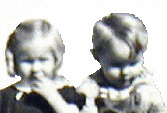 Confession! I've never understood or really liked jazz . . .
Confession! I've never understood or really liked jazz . . .. . . not until I had put a belt or two under my belt to help me endure it.
But recently I turned on my speakers and downloaded the webpage belonging to the daughter of a friend of mine. I was not only surprised, but astounded that she called her work "jazz"--it's obvious the genre has evolved considerably--and in positive directions--since I originally tried to tune my ear to it. Her name is Stephanie and you're in for a treat if you listen to some of the many samples she has loaded (free) for your enjoyment (see the link below).
I'm certain my dislike for and ignorance of the medium was partially due to certain biases my family inculcated in me--classical music (it has "rules" and rhythms that one can anticipate and even memorize)--and the unfortunate encounter I had with "modern" jazz after enrolling in college. As a 17-year old who wanted to be as "sophisticated" as my peers, I collected the names of stalwarts such as Stan Brubeck, Thelonious Monk, Woody Herman, Dizzy Gillespie, et. al., and invested, with what little money I had for subsistence, in several LPs.
The "in crowd" tutored me that these were musical geniuses who performed without writte
 n guidelines or practice--yielding improvisations without equal. Despite my best and honest efforts, to my ear they seemed to be--for the most part--painfully disjointed dissonances. It was my preconceived notion that one should feel uplifted after listening to their noises--or at least some better than before engaging one's record player. However, after a trial run of about a year, I finally gave my LP recordings away--I was thankful not having to stare at them on my bookshelf, making me feel guilty about the money I paid for them through a mail-order record club.
n guidelines or practice--yielding improvisations without equal. Despite my best and honest efforts, to my ear they seemed to be--for the most part--painfully disjointed dissonances. It was my preconceived notion that one should feel uplifted after listening to their noises--or at least some better than before engaging one's record player. However, after a trial run of about a year, I finally gave my LP recordings away--I was thankful not having to stare at them on my bookshelf, making me feel guilty about the money I paid for them through a mail-order record club.To me, listening to a "jazz session" by these geniuses was like having to ma
 ke stare for 15 minutes without a break at my print-reproduction of Guernica or most any other disjointed work Pablo Picasso turned out in his "later period"-- that is, after he abandoned his natural ability to reproduce the beautiful forms, colors, and subtleties of the real world. I always suspected the old boy took the easy way out to make a fast buck when he discovered the craving the post-WWII middle- and upper-class population had developed for something "different" in art. I hold the same suspicion today about the surge in music that resulted in modern jazz at the same time.
ke stare for 15 minutes without a break at my print-reproduction of Guernica or most any other disjointed work Pablo Picasso turned out in his "later period"-- that is, after he abandoned his natural ability to reproduce the beautiful forms, colors, and subtleties of the real world. I always suspected the old boy took the easy way out to make a fast buck when he discovered the craving the post-WWII middle- and upper-class population had developed for something "different" in art. I hold the same suspicion today about the surge in music that resulted in modern jazz at the same time.I haven't had time to research or listen to enough of the very different strains that wafted from her webpage, but what I heard coming from Stephanie's site convinced me that "jazz" has evolved considerably since I bade goodbye to Stan Brubeck and his ilk years ago.
In fact, if you're as ignorant as I still am about jazz, I found a terrific website to ply the history of jazz. After 30 minutes on this site, I now recognize the "jazz" genre is far wider and deeper than I ever appreciated, so somewhere in that vast field I suspect are forms of jazz that might even have met my approval years ago.

In the meantime, if you're seeking a new, vibrant (and disciplined) music form Stephanie classifies as jazz, you can leap over all those years of music history and cut to the chase for some fine listening. Although Stephanie doesn't appear on the rolls of jazz history yet, I fervently trust she may be someday. Listen to Stephanie now.

No comments:
Post a Comment